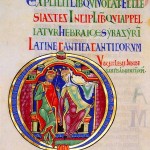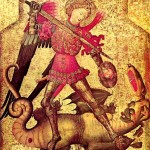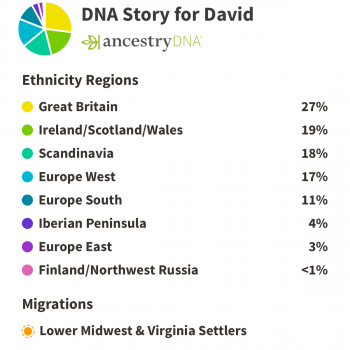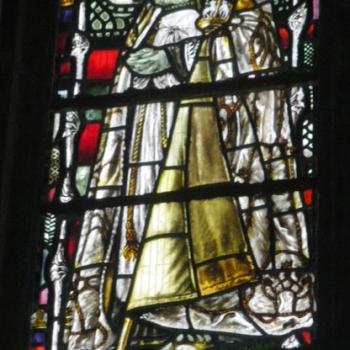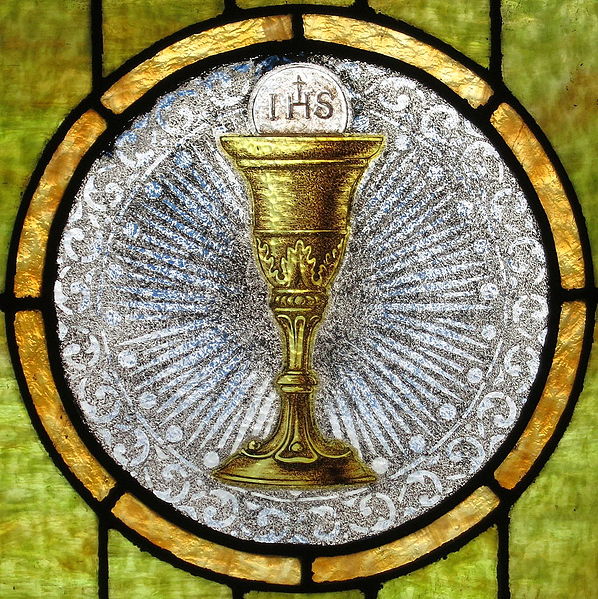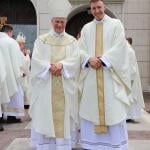David Russell Mosley
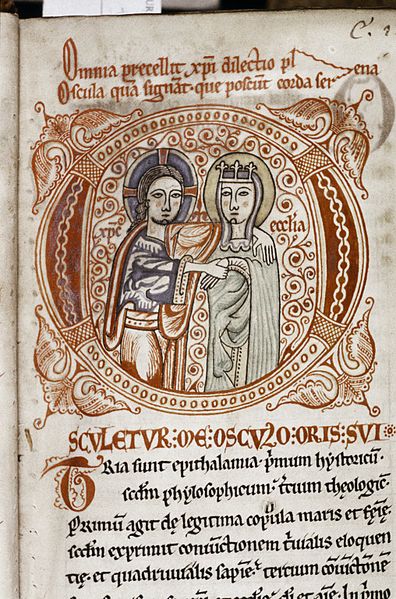
Deutsch: Buchmalerei aus dem Kloster Eberbach, Rheingau. Das vom Mönch Thomas gemalte Bild zeigt “Christus und Ecclesia” und ziert einen Kommentar zum Hohenlied.
Date
English: 12th century, second half
Source Digitalisiert http://bodley30.bodley.ox.ac.uk:8180/luna/servlet/detail/ODLodl~1~1~46686~113586:Commentary-on-the-Song-of-Songs-?sort=Shelfmark%2CFolio_Page#
Author Mönch Thomas (Kloster Eberbach)
Public Domain
Ordinary Time
St. John Chrysostom
The Edge of Elfland
Hudson, New Hampshire
Dear Readers,
Yesterday’s letter about sex, the early church, and allegory, put me in mind of something written by John Cassian. Cassian is an enigmatic figure, as I’ve told you before, but I think many today would be surprised to know he wrote anything more than The Institutes and The Conferences. However, Cassian wrote an entire work on the nature of the Incarnation against Nestorianism. He was actually commissioned to write this work by Leo who was at the time Archdeacon of Rome and later became Pope Leo I (also known as Pope Leo the Great). Many have derided Cassian’s work on the Incarnation primarily because they claim he little understood the position put forward by Nestorius. I don’t want to get too technical here, but ultimately this comes down to Cassian couching Nestorianism with, to a certain extent, Pelagianism. Whether Cassian rightly or wrongly understood Nestorius is, ultimately inconsequential, at least for my purposes today. Today, I want to look at one particular passage.
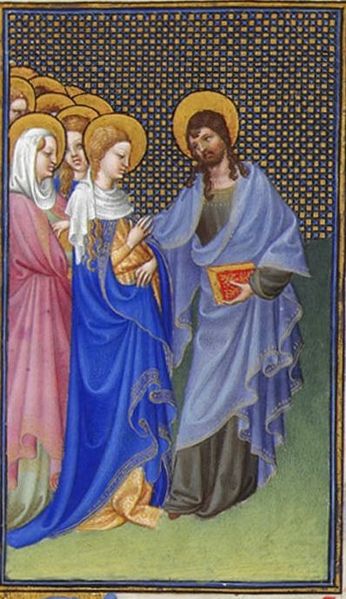
Public Domain
In Chapter 11 of Book 5, Cassian begins to discuss the coming together of the divine and the human in Jesus Christ. Cassian understood Nestorius as teaching that the human nature of Jesus lived for some time before being joined to the divine nature (whether this happened at birth or at baptism). And so Cassian wants to ensure that we understand that in the person of Jesus Christ there has always been the co-incidence of the divine and the human. He writes:
“And so to every man who breaks out into this mad blasphemy, the Lord Jesus in the gospel Himself repeats what He said to the Pharisees, and declares: “What God hath joined together, let not man put asunder.” For although where it was originally spoken by God it seems to be in answer to another matter, yet the deep wisdom of God which was speaking not more of carnal than of spiritual things, would have this to be taken of that subject indeed, but even more of this: for when the Jews of that day believed with you that Jesus was only a man without Divinity, and the Lord was asked a question about the union in marriage, in His teaching He not only referred to it, but to this also: though consulted about matters of less importance His answer applied to greater and deeper matters, when he said, “What God hath joined together, let not man put asunder,” i.e., Do not sever what God hath joined together in My Person. Let not human wickedness sever that which the Divine Glory hath united in Me.”
Cassian cites Christ’s words in Matthew 19.6, which he recognizes as being, on the surface, a reference to marriage and divorce, as also a reference to the unification of divine and human in Christ. Now perhaps some could read this passage and say that Cassian wants us to put away the “carnal” reading. But ultimately this would be difficult to maintain. Yes, Cassian believed the higher meaning, about the two natures of Christ was more important. And of course it is. The reality of who Christ is is more important than our understanding of marriage and divorce. Nevertheless, this passage is only comprehensible if we understand the literal meaning. That is, only if we understand what marriage is, what divorce is, what the union of man and woman is (in sex and in marriage) can we begin to understand the union of the two natures of Christ. It is only because we recognize men and women as different, and as remaining individual even while being united that we can begin to understand that Christ is both divine and human. Only when we have at least a functional knowledge of the intimacies of sex can we understand not only the intimate relationship between Christ’s divinity and humanity but between Christ and the Church.

Description
name lost in internet. Seems to be Mystic Marriage of Christ and the Church
Date 17th century
Source http://www.cattolicesimo.eu/forum/viewtopic.php?t=923&postdays=0&postorder=asc&start=15
Author name lost, Italy or Spain
Public Domain
Cassian goes on to talk about that very relationship as he turns to Paul in Ephesians 5.25-30. Here Cassian sees the reference to husbands and wives as being about Christ and the Church, which makes sense since the Apostle makes the comparison himself. Now Cassian does say that Paul, “cuts off and gets rid of any carnal interpretation, by saying that it is a Divine mystery.” However, this is in reference to the passage Christ quotes from Genesis, “‘For this cause shall a man leave his father and his mother, and shall cleave unto his wife, and they twain shall be one flesh.'” When Cassian says Paul cuts off any carnal interpretation, what he means is that this passage is a reference to the coming together of divine and human in Christ, but that, should those who cannot understand this, read this passage, they will still understand it as being about Christ and the Church. Cassian is a monk, and so he is not going to be prone to extolling marriage. Nevertheless, his allegorical interpretations of these passages only work if the literal interpretation remains. Paul may very well not be talking to us about marriage primarily (that is on the literal level), but his allegory only works because we know what marriage is, what sex is.
Did Cassian think that celibacy was a higher calling that marriage? Yes. But again, Paul seems to agree with him. What’s most important here, however, is that only an understanding of the lower thing can the higher be understood. Only because some, perhaps even the majority, of us participate in marriage can we begin to understand how marriage and sex relate not only to Christ’s relationship to the Church, but how Christ’s divinity relates to his humanity. This in no way suggests that our physicality is inherently bad. Rather it says something rather tremendous: our physicality, our marriages, our sex lives, are shadows, intimations, of the deeper reality that upholds them and gives them meaning. We do not understand marriage through the lens of Christ and the Church, rather, Christ and the Church is the source for our understanding of marriage. Sex too is informed by the Incarnation, that intimate cleaving together of divinity and humanity informs the cleaving together of man and wife in the marital bed. Even if Cassian leans perhaps a bit too far away from the “carnal” interpretations, what he has written still gives them life, shape, and meaning by sourcing them in the person of Jesus Christ.
Sincerely,
David

